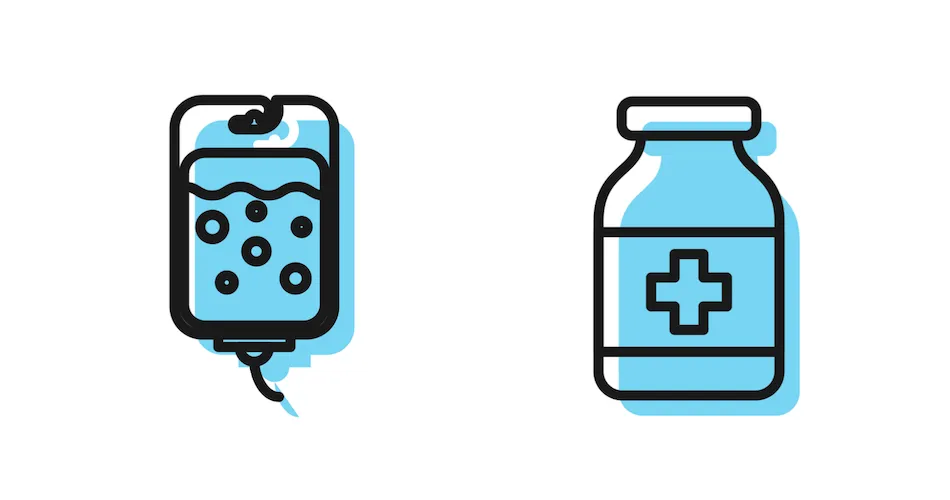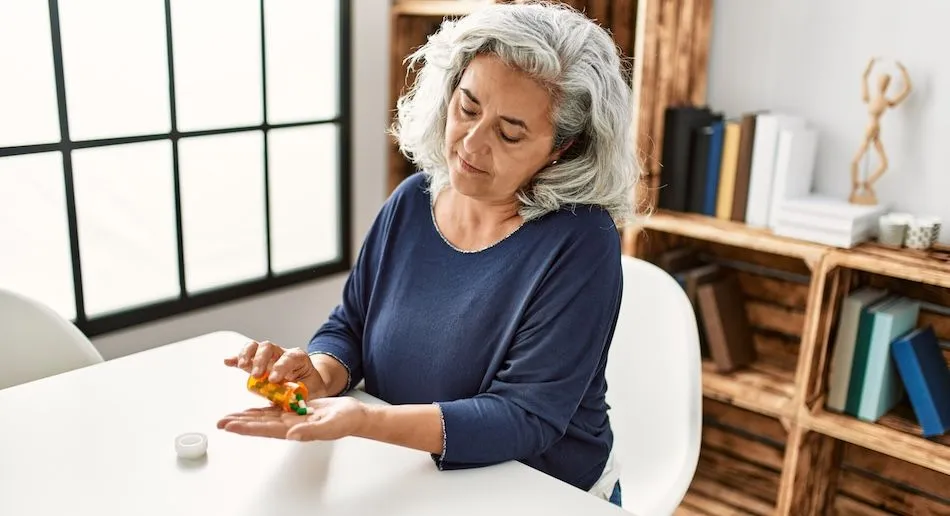Clinical Trials for CLL: AVO Study

The AVO study is reviewing if using a fixed treatment duration of acalabrutinib (calquence), venetoclax (venclexta), and obinutuzumab (gazyva) can help CLL/SLL patients achieve a timely and deep remission (full decrease of cancer cells and signs/symptoms in the blood and bone marrow that lasts for several years).
VO and AO Effectiveness before AVO
Venetoclax + Obinutuzumab (VO)
Venetoclax (non-chemo BCL2 inhibitor) is effective at reducing the cancer cells for many CLL patients with or without high-risk features like del(17p)/TP53 mutation. The reason to combine venetoclax with the monoclonal antibody obinituzumab came from the need to extend the time of remission for patients with high-risk features. Without the addition of the monoclonal antibody, patients with high-risk features like del(17p)/TP53 mutation had shorter remission periods than those without. Venetoclax + obinutuzumab is administered over a 12-month treatment course for first-time treated CLL patients.
First-time treated CLL patients w/ venetoclax + obinutuzumab (includes patients with del(17p)/TP53 mutation)
- 76% of patients uMRD (undetectable minimal residual disease meaning not able to find CLL cells using highly sensitive tests) in peripheral blood at 3-month post-treatment follow-up
- 85% of patients had reduced signs/symptoms (50% full reduction, 35% partial reduction)
- 62.6% of the patients had not had their CLL progress at 5 year follow-up
Acalabrutinib + Obinutuzumab (AO)
Acalabrutinib (non-chemo BTK inhibitor) is currently approved to treat CLL with or without obinutuzumab for first-time treatment. Acalabrutinib is approved to be taken by itself for previously treated CLL patients. The treatment combination showed effective results at reducing CLL signs/symptoms and the cells in the body for patients with and without high-risk features. Acalabrutinib is taken indefinitely until CLL cell resistance occurs or unable the patient is unable to tolerate the medication's side effects. The study did not have information related to uMRD for this treatment combination.
First-time treated CLL patients w/ acalabrutinib + obinutuzumab (includes patients with del(17p)/TP53 mutation)
- Acalabrutinib taken by itself:
- 90% of patients at a 5-year follow-up continued to be in remission with no progression of the disease
- Acalabrutinib + obinutuzumab:
- 95% of patients at a 5-year follow-up continued to be in remission with no progression of the disease
AVO Study Outcomes
In combining these medicines together, the study’s goal was to achieve little to no cancer cells in the blood or bone marrow (uMRD) using a highly sensitive test of flow cytometry for CLL/SLL patients that had not received treatment before.
Updates from phase 2 of the study showed that the percentage of patients that achieved uMRD in the blood and bone marrow were very similar for patients with and without high-risk genetic features like del(17p)/TP53 mutation.
Patient Group Characteristics
- 68 patients
- Average patient age was 63
- 60.3% had del(17p) and/or TP53 mutation
- 73.5% had unmutated IgHV
- 26.2% had complex karyotype
After administering acalabrutinib, obinutuzumab, and venetoclax for 16 cycles (each cycle was for 28 days), on day 1 of the 16th cycle, researchers took bone marrow samples of the patients. Those that had achieved uMRD stopped treatment. Patients that had only some but not a full reduction of CLL cancer cells in the bone marrow continued with 9 more cycles of treatment. The next bone marrow test was taken on day one of cycle 25.
After all cycles were completed, the results of all patients combined showed:
- 98% of patients had reduction of CLL signs/symptoms (48% complete reduction, 50% partial)
- 78% of patients had uMRD in peripheral blood
- 65.9% of patients had uMRD in bone marrow
- 92.6% of patients disease had not progressed at follow-up of 35 months after treatment
Study results of patients with del(17p)/TP53 mutation
- 86% of patients achieved uMRD in peripheral blood
- 86% of patients achieved uMRD in bone marrow
Treatment Safety
Data showed a good safety profile with low-risk side effects that occurred in only 25% of the patient group (78% of those being headache, 76% fatigue, and 66% bruising). Following up at 35 months, side effects occurring in the blood included 37% of patients experiencing neutropenia at grade 3 or 4, and most patients experiencing thrombocytopenia and anemia but were able to be managed (see here for common solutions to CLL medicine side effects).
Is AVO Better than VO or AO Alone?
Side-by-side comparison data of all first-time treated CLL patients with and without del(17p)/TP53 mutation on VO (fixed duration treatment of 12 months then treatment stops), AO (A- continual therapy, O portion fixed duration), or AVO (fixed duration).
- uMRD peripheral blood
- VO - 76% of patients
- AVO - 78% of patients
- Disease did not progress
- VO - 62.6% of patients disease had not progressed at 5 year follow-up
- AO - 95% of patients disease had not progressed at 5 year follow-up
- AVO - 92.6% of patients disease had not progressed at 3 year follow-up
- Reduction in signs/symptoms of CLL
- VO - 85% of patients had reduced signs/symptoms (50% full reduction, 35% partial reduction)
- AVO - 98% of patients had reduction of CLL signs/symptoms (48% complete reduction, 50% partial)
The AVO study shows promising data of a fixed duration therapy with high uMRD, high percentages of patients whose disease does not progress after treatment for multiple years, and a greater reduction of CLL signs/symptoms compared to other treatment combinations. The study is ongoing and continues to review the effectiveness of the AVO treatment combination. For more updates about CLL clinical trials, see here.
The AVO study is reviewing if using a fixed treatment duration of acalabrutinib (calquence), venetoclax (venclexta), and obinutuzumab (gazyva) can help CLL/SLL patients achieve a timely and deep remission (full decrease of cancer cells and signs/symptoms in the blood and bone marrow that lasts for several years).
VO and AO Effectiveness before AVO
Venetoclax + Obinutuzumab (VO)
Venetoclax (non-chemo BCL2 inhibitor) is effective at reducing the cancer cells for many CLL patients with or without high-risk features like del(17p)/TP53 mutation. The reason to combine venetoclax with the monoclonal antibody obinituzumab came from the need to extend the time of remission for patients with high-risk features. Without the addition of the monoclonal antibody, patients with high-risk features like del(17p)/TP53 mutation had shorter remission periods than those without. Venetoclax + obinutuzumab is administered over a 12-month treatment course for first-time treated CLL patients.
First-time treated CLL patients w/ venetoclax + obinutuzumab (includes patients with del(17p)/TP53 mutation)
- 76% of patients uMRD (undetectable minimal residual disease meaning not able to find CLL cells using highly sensitive tests) in peripheral blood at 3-month post-treatment follow-up
- 85% of patients had reduced signs/symptoms (50% full reduction, 35% partial reduction)
- 62.6% of the patients had not had their CLL progress at 5 year follow-up
Acalabrutinib + Obinutuzumab (AO)
Acalabrutinib (non-chemo BTK inhibitor) is currently approved to treat CLL with or without obinutuzumab for first-time treatment. Acalabrutinib is approved to be taken by itself for previously treated CLL patients. The treatment combination showed effective results at reducing CLL signs/symptoms and the cells in the body for patients with and without high-risk features. Acalabrutinib is taken indefinitely until CLL cell resistance occurs or unable the patient is unable to tolerate the medication's side effects. The study did not have information related to uMRD for this treatment combination.
First-time treated CLL patients w/ acalabrutinib + obinutuzumab (includes patients with del(17p)/TP53 mutation)
- Acalabrutinib taken by itself:
- 90% of patients at a 5-year follow-up continued to be in remission with no progression of the disease
- Acalabrutinib + obinutuzumab:
- 95% of patients at a 5-year follow-up continued to be in remission with no progression of the disease
AVO Study Outcomes
In combining these medicines together, the study’s goal was to achieve little to no cancer cells in the blood or bone marrow (uMRD) using a highly sensitive test of flow cytometry for CLL/SLL patients that had not received treatment before.
Updates from phase 2 of the study showed that the percentage of patients that achieved uMRD in the blood and bone marrow were very similar for patients with and without high-risk genetic features like del(17p)/TP53 mutation.
Patient Group Characteristics
- 68 patients
- Average patient age was 63
- 60.3% had del(17p) and/or TP53 mutation
- 73.5% had unmutated IgHV
- 26.2% had complex karyotype
After administering acalabrutinib, obinutuzumab, and venetoclax for 16 cycles (each cycle was for 28 days), on day 1 of the 16th cycle, researchers took bone marrow samples of the patients. Those that had achieved uMRD stopped treatment. Patients that had only some but not a full reduction of CLL cancer cells in the bone marrow continued with 9 more cycles of treatment. The next bone marrow test was taken on day one of cycle 25.
After all cycles were completed, the results of all patients combined showed:
- 98% of patients had reduction of CLL signs/symptoms (48% complete reduction, 50% partial)
- 78% of patients had uMRD in peripheral blood
- 65.9% of patients had uMRD in bone marrow
- 92.6% of patients disease had not progressed at follow-up of 35 months after treatment
Study results of patients with del(17p)/TP53 mutation
- 86% of patients achieved uMRD in peripheral blood
- 86% of patients achieved uMRD in bone marrow
Treatment Safety
Data showed a good safety profile with low-risk side effects that occurred in only 25% of the patient group (78% of those being headache, 76% fatigue, and 66% bruising). Following up at 35 months, side effects occurring in the blood included 37% of patients experiencing neutropenia at grade 3 or 4, and most patients experiencing thrombocytopenia and anemia but were able to be managed (see here for common solutions to CLL medicine side effects).
Is AVO Better than VO or AO Alone?
Side-by-side comparison data of all first-time treated CLL patients with and without del(17p)/TP53 mutation on VO (fixed duration treatment of 12 months then treatment stops), AO (A- continual therapy, O portion fixed duration), or AVO (fixed duration).
- uMRD peripheral blood
- VO - 76% of patients
- AVO - 78% of patients
- Disease did not progress
- VO - 62.6% of patients disease had not progressed at 5 year follow-up
- AO - 95% of patients disease had not progressed at 5 year follow-up
- AVO - 92.6% of patients disease had not progressed at 3 year follow-up
- Reduction in signs/symptoms of CLL
- VO - 85% of patients had reduced signs/symptoms (50% full reduction, 35% partial reduction)
- AVO - 98% of patients had reduction of CLL signs/symptoms (48% complete reduction, 50% partial)
The AVO study shows promising data of a fixed duration therapy with high uMRD, high percentages of patients whose disease does not progress after treatment for multiple years, and a greater reduction of CLL signs/symptoms compared to other treatment combinations. The study is ongoing and continues to review the effectiveness of the AVO treatment combination. For more updates about CLL clinical trials, see here.

about the author
Megan Heaps
Megan joined HealthTree in 2022. She enjoys helping patients and their care partners understand the various aspects of the cancer. This understanding enables them to better advocate for themselves and improve their treatment outcomes.
More on Clinical Trials
Trending Articles

Get the Latest Chronic Lymphocytic Leukemia Updates, Delivered to You.
By subscribing to the HealthTree newsletter, you'll receive the latest research, treatment updates, and expert insights to help you navigate your health.
Together we care.
Together we cure.
3x Faster.










